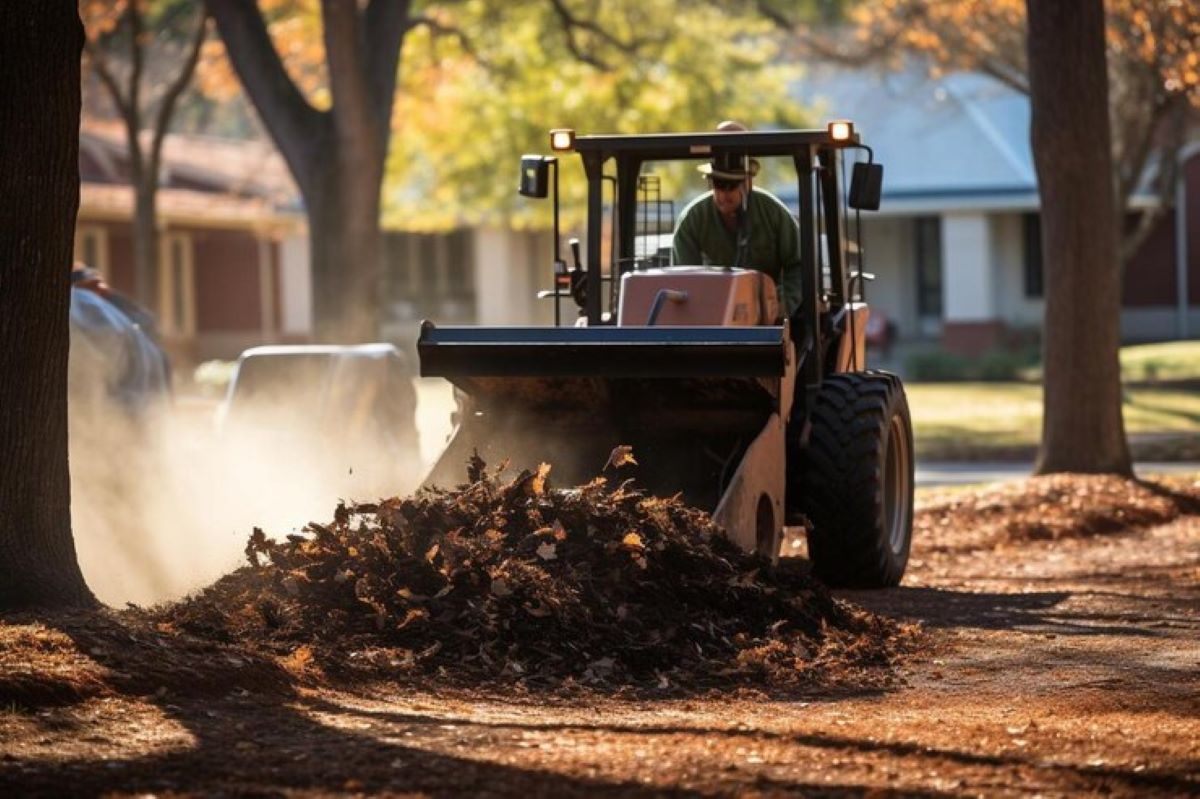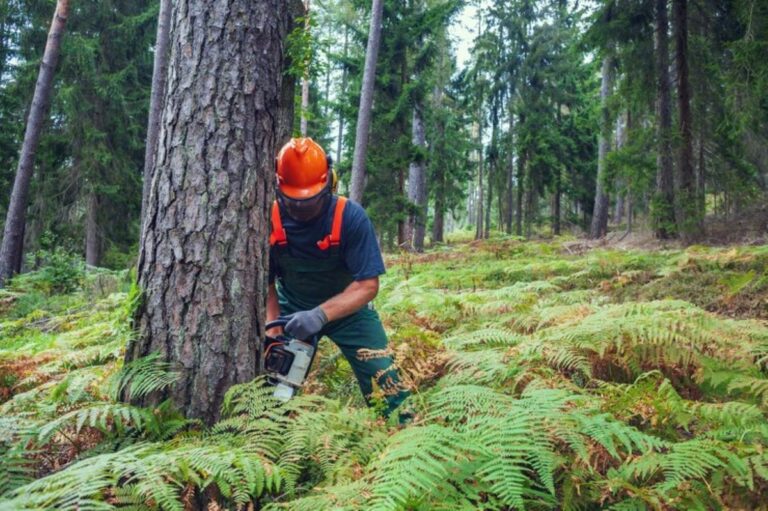Land Clearing Services Near Me: Efficient and Professional
When it comes to land clearing, finding efficient and professional services is crucial. Land clearing is an essential step in many construction projects, ensuring that the land is properly prepared for development. It involves the removal of trees, shrubs, rocks, and other obstacles to create a clear and level surface. However, land clearing is not just about bulldozing everything in sight. There are several important considerations to keep in mind to ensure that the process is done correctly and responsibly.
Understanding the Importance of Land Clearing
Land clearing plays a vital role in the construction industry. Before any construction project can begin, the land needs to be properly prepared by professional arborist. This involves removing any vegetation, debris, or other obstacles that may interfere with the construction process. By clearing the land beforehand, construction workers have a clean canvas to start building.
Furthermore, land clearing is not only essential for construction projects but also for various other purposes such as agricultural development, infrastructure expansion, and wildfire prevention. In agricultural settings, land clearing allows for the cultivation of crops and the grazing of livestock. It also aids in the establishment of new infrastructure like roads, bridges, and buildings, contributing to economic growth and development. Additionally, proactive land clearing near residential areas can create firebreaks that help prevent the spread of wildfires, protecting both property and lives.
The Role of Land Clearing in Construction
Land clearing is more than just clearing the site for construction; it also involves site grading and preparation. Site grading ensures that the land is level and properly sloped to prevent drainage issues and ensure the structural stability of the future building. The removal of trees and other vegetation also helps prevent issues such as root damage to buildings and infrastructure.
Moreover, proper land clearing techniques can uncover potential hazards such as buried debris, old foundations, or hazardous materials, ensuring a safe and efficient construction process. By addressing these issues during the land clearing phase, construction delays and costly surprises during the building phase can be minimized, ultimately saving time and resources.
Environmental Considerations in Land Clearing
While land clearing is necessary, it is essential to approach it with environmental considerations in mind. Clearing land can have a significant impact on the ecosystem, including habitat destruction and soil erosion. To mitigate these impacts, professional land clearing services take measures to minimize environmental damage. They may implement erosion control measures, replant trees or shrubs, and dispose of debris responsibly.
Furthermore, sustainable land clearing practices such as selective clearing, where only specific trees or vegetation are removed, help preserve biodiversity and maintain ecosystem balance. By carefully planning and executing land clearing activities with environmental awareness, it is possible to achieve the necessary land preparation for development while minimizing negative impacts on the surrounding environment.
Key Features of Professional Land Clearing Services
When choosing a land clearing service, there are several key features to consider. Professional land clearing services offer expertise, efficiency, and safety measures to ensure a successful project.
Professional land clearing services not only excel in expertise, efficiency, and safety but also provide a range of additional benefits that set them apart from amateur services. One such advantage is their commitment to environmental sustainability. These professionals understand the importance of preserving ecosystems and biodiversity during land clearing projects. They employ eco-friendly practices such as mulching and selective clearing to minimize the impact on the surrounding flora and fauna.
Efficiency in Land Clearing Operations
Professional land clearing services utilize the latest equipment and techniques to complete projects efficiently. This includes using bulldozers, excavators, and other machinery specifically designed for land clearing tasks. With their expertise and efficient methods, professional services can clear large areas of land in a timely manner.
Moreover, professional land clearing services go beyond just clearing the land. They also offer additional services such as grading and site preparation, ensuring that the land is ready for the next phase of development. By providing comprehensive solutions, these professionals streamline the entire land preparation process, saving time and resources for their clients.
Safety Measures Adopted by Professionals
Land clearing can be a hazardous task. Professional land clearing services prioritize safety and take all necessary precautions to protect both their workers and the surrounding environment. They follow strict safety protocols, ensuring that all equipment is operated safely and that workers are properly trained. Additionally, they have liability insurance to cover any potential damages or accidents that may occur during the clearing process.
Furthermore, professional land clearing services conduct thorough site inspections before commencing work to identify any potential hazards or obstacles. This proactive approach not only enhances safety but also allows for better planning and execution of the clearing project. By addressing safety concerns upfront, these professionals ensure a smooth and incident-free operation from start to finish.
See Also: Arbor Pride: Leading Arborist Services in Sydney
Factors to Consider When Choosing a Land Clearing Service
Choosing the right land clearing service is essential to ensure that the job is done properly and responsibly. Here are some factors to consider when making your decision:
Assessing the Experience and Reputation
Experience matters when it comes to land clearing. Look for a service provider with a proven track record in the industry. Check their portfolio, customer reviews, and ask for references. A reputable company will have a solid reputation and a history of successfully completed projects.
Moreover, it’s beneficial to inquire about the specific types of land clearing projects they have worked on in the past. Different terrains and vegetation require varying expertise and equipment. By understanding their experience with similar projects, you can gauge their suitability for your specific needs.
Evaluating the Equipment and Technology Used
Land clearing requires specialized equipment and technology. Ensure that the service provider you choose has modern and well-maintained equipment. Advanced technology can increase efficiency and minimize environmental impact. Ask about the specific tools and machinery they will use for your project.
In addition to the equipment, it’s worth considering if the land clearing service embraces environmentally friendly practices. Some companies offer sustainable land clearing options that prioritize ecosystem preservation and restoration. By opting for a service provider that values environmental stewardship, you can contribute to conservation efforts while achieving your land clearing goals.

The Process of Land Clearing Explained
The land clearing process involves several stages to ensure a thorough and efficient clearing operation.
Land clearing is a crucial step in preparing a site for construction, agriculture, or other development projects. It requires careful planning and execution to ensure the land is cleared effectively while minimizing environmental impact.
Initial Assessment and Planning
Before any work begins, a professional land clearing service will conduct a detailed assessment of the site. They will evaluate factors such as the type and density of vegetation, the presence of obstacles, and any environmental considerations. Based on this assessment, a clear plan will be developed to guide the clearing process.
During the initial assessment phase, it is essential to consider any protected or endangered species that may inhabit the area. Special care and permits may be required to ensure compliance with environmental regulations and to protect sensitive ecosystems.
Execution and Debris Management
Once the plan is in place, the land clearing process begins. Trees, shrubs, and other vegetation will be cut and removed from the site. The debris will be properly managed, either through recycling, composting, or disposal in an appropriate manner. The land will be cleared of all visible obstacles, ensuring a clean slate for construction to begin.
Efficient debris management is crucial to minimize waste and environmental impact. Recycling organic materials can help reduce the amount of waste sent to landfills and may even provide valuable resources for future landscaping or agricultural projects.
Costing and Timeframe for Land Clearing Services
Understanding the costing and timeframe for land clearing services is important for budgeting and planning purposes. Let’s dive deeper into this topic to gain a comprehensive understanding of what factors affect pricing structures and how the time required for land clearing is estimated.
Understanding Pricing Structures
Land clearing services may have different pricing structures depending on the scope and complexity of the project. Some common factors that can affect pricing include the size of the land, the density of vegetation, and any additional services required, such as stump removal or grading. The size of the land plays a significant role in determining the overall cost, as larger areas require more time, labor, and equipment. Similarly, the density of vegetation can impact the difficulty and time required for clearing, as dense forests or overgrown areas may require specialized equipment and techniques.
When requesting a detailed quote for land clearing services, it is crucial to provide accurate information about the land’s size and vegetation density. This will help the service provider assess the project’s complexity and provide an accurate estimate. Additionally, it is advisable to inquire about any additional services that may be necessary, as these can impact the overall cost. By understanding the pricing structures and factors involved, you can make informed decisions and budget accordingly.

Estimating the Time Required for Land Clearing
The timeframe for land clearing can vary depending on various factors, including the size of the land and the density of vegetation. A professional land clearing service will provide an estimated timeline based on their experience and the specific project requirements. The size of the land, as mentioned earlier, is a crucial factor in determining the time required. However, it is important to note that the density of vegetation also plays a significant role.
In areas with dense vegetation, the land clearing process may take longer due to the need for careful removal and disposal of vegetation. Additionally, the presence of obstacles such as rocks, tree stumps, or uneven terrain can further impact the time required for clearing. Professional land clearing services have the expertise and equipment to efficiently handle these challenges, ensuring a smooth and timely process.
When planning your construction schedule, it’s important to consider the estimated timeframe for land clearing. This will help you align your project timelines and ensure that the land is cleared and ready for development when needed. By collaborating closely with your land clearing service provider and taking into account the various factors that can affect the time required, you can effectively plan and execute your construction project.
Expanding your knowledge about costing and timeframes for land clearing services allows you to make well-informed decisions and effectively manage your construction projects. By understanding the pricing structures and factors involved, you can budget accordingly and avoid any surprises. Similarly, considering the estimated timeframe for land clearing enables you to align your project timelines and ensure a smooth progression from land preparation to development. With these insights, you can confidently move forward with your construction project, knowing that the land will be efficiently cleared and prepared for the next phase.



